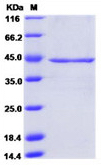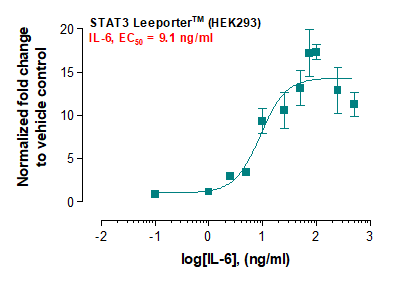Recombinant Rabbit Monoclonal Antibody to Glycophorin A / CD235a (Erythrocyte Marker)(Clone : GYPA/1725R)

Figure 1: Formalin-fixed, paraffin-embedded human Angiosarcoma stained with Glycophorin A Rabbit Recombinant Monoclonal Antibody (GYPA/1725R).
Roll over image to zoom in
Shipping Info:
For estimated delivery dates, please contact us at [email protected]
| Format : | Purified |
| Amount : | 100 µg |
| Isotype : | Rabbit IgG |
| Purification : | Purified Ab with BSA and Azide at 200ug/ml |
| Content : | 200ug/ml of Ab purified by Protein A. Prepared in 10mM PBS with 0.05% BSA & 0.05% azide. Also available WITHOUT BSA & azide at 1.0mg/ml. |
| Storage condition : | Store the antibody at 4°C; stable for 6 months. For long-term storage; store at -20°C. Avoid repeated freeze and thaw cycles. |
| Gene : | GYPA |
| Gene ID : | 2993 & 2994 |
| Uniprot ID : | P02724 |
| Alternative Name : | Blood group--MN locus, GPA, GPErik, GpMiIII, GPSAT, GYPA, MN sialoglycoprotein, MNS, PAS2, Sialoglycoprotein alpha |
| Immunogen Information : | Recombinant human full-length Glycophorin A protein |
Western Blot (1-2µg/ml); Immunohistochemistry (Formalin-fixed) (1-2µg/ml for 30 minutes at RT)(Staining of formalin-fixed tissues requires heating tissue sections in 10mM Tris with 1mM EDTA, pH 9.0, for 45 min at 95°C followed by cooling at RT for 20 minutes);
For Research Use Only. Not for use in diagnostic/therapeutics procedures.
| Subcellular location: | Cell membrane |
| Post transnational modification: | The major O-linked glycan are NeuAc-alpha-(2-3)-Gal-beta-(1-3)-[NeuAc-alpha-(2-6)]-GalNAcOH (about 78 %) and NeuAc-alpha-(2-3)-Gal-beta-(1-3)-GalNAcOH (17 %). Minor O-glycans (5 %) include NeuAc-alpha-(2-3)-Gal-beta-(1-3)-[NeuAc-alpha-(2-6)]-GalNAcOH NeuAc-alpha-(2-8)-NeuAc-alpha-(2-3)-Gal-beta-(1-3)-GalNAcOH. About 1% of all O-linked glycans carry blood group A, B and H determinants. They derive from a type-2 precursor core structure, Gal-beta-(1,3)-GlcNAc-beta-1-R, and the antigens are synthesized by addition of fucose (H antigen-specific) and then N-acetylgalactosamine (A antigen-specific) or galactose (B antigen-specific). Specifically O-linked-glycans are NeuAc-alpha-(2-3)-Gal-beta-(1-3)-GalNAcOH-(6-1)-GlcNAc-beta-(4-1)-[Fuc-alpha-(1-2)]-Gal-beta-(3-1)-GalNAc-alpha (about 1%, B antigen-specific) and NeuAc-alpha-(2-3)-Gal-beta-(1-3)-GalNAcOH-(6-1)-GlcNAc-beta-(4-1)-[Fuc-alpha-(1-2)]-Gal-beta (1 %, O antigen-, A antigen- and B antigen-specific). |
| BioGrid: | 109248. 13 interactions. |
|
There are currently no product reviews
|


















.png)














